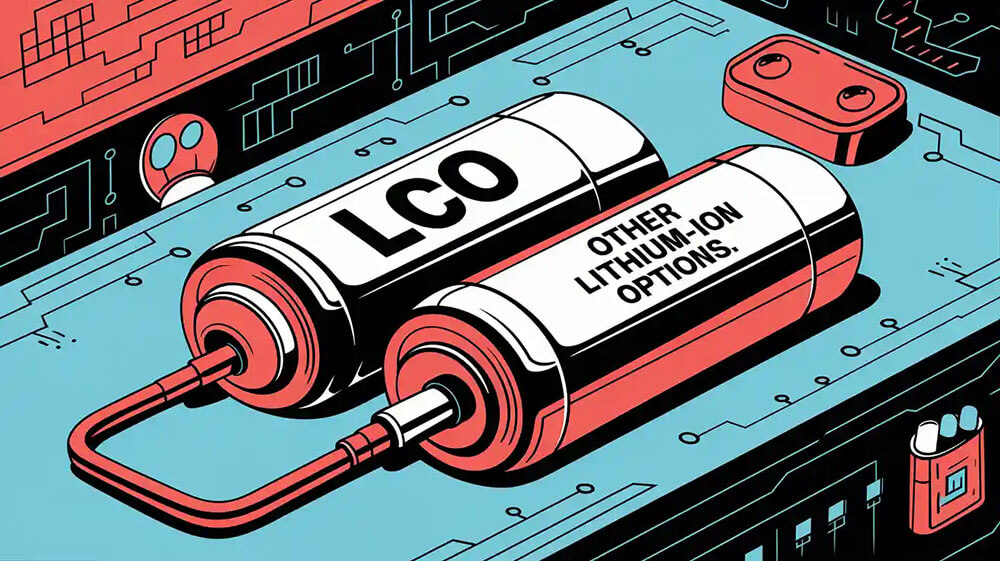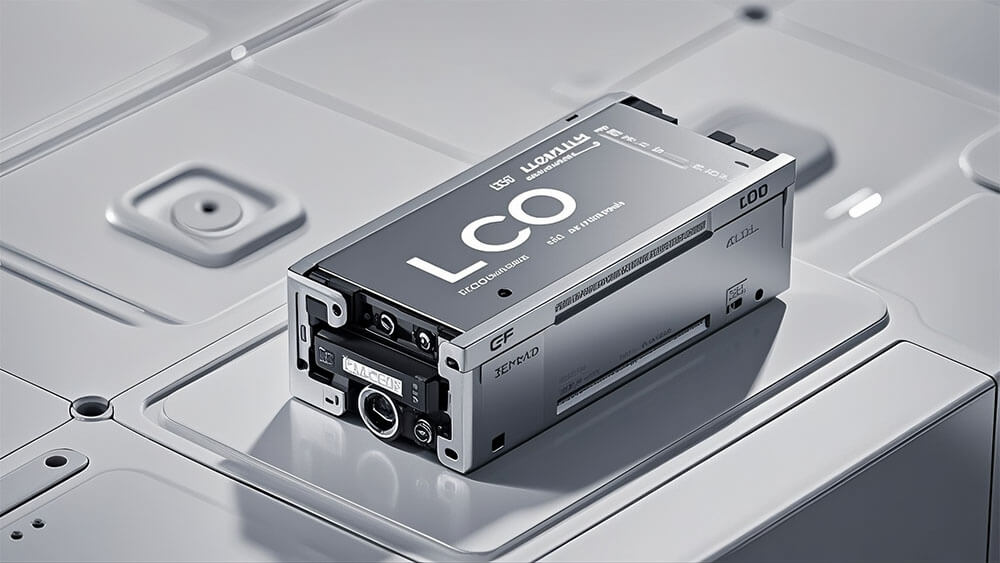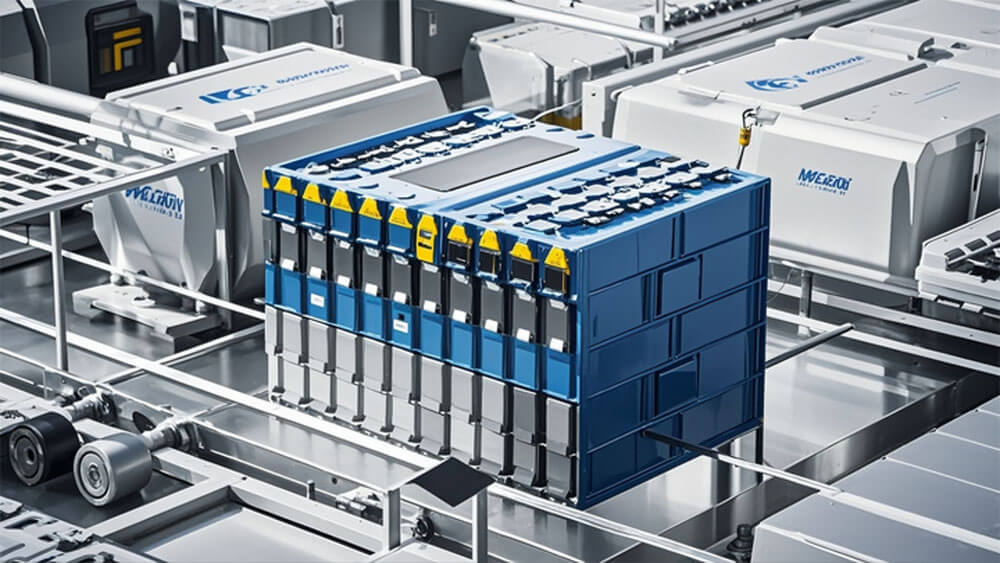Contents

In 2025, selecting the right battery technology has become critical for optimizing performance and safety across various applications. Understanding the differences between an LCO battery and other lithium-ion chemistries ensures you make informed decisions tailored to your needs.
A recent study highlights that lithium cobalt oxide batteries excel in energy density, making them ideal for compact devices. However, alternative chemistries like lithium iron phosphate (LFP) offer better safety and longer lifespans, making them suitable for high-load applications.
Choosing the right battery impacts device efficiency, longevity, and environmental sustainability.
Key Takeaways
- LCO batteries store a lot of energy, perfect for small gadgets like phones and laptops.
- Safety matters; LCO batteries need heat control, but LFP batteries are safer and last longer for heavy use.
- Pick a battery based on your needs: choose energy storage for small devices and safety for cars or solar power.
Part 1: Overview of LCO Batteries
1.1 What Is an LCO Battery?
A Lithium Cobalt Oxide (LCO) battery is a type of lithium-ion battery that uses lithium cobalt oxide as its cathode material. Its high energy density makes it the preferred choice for portable devices. According to a 2024 report by the International Battery Technology Association (IBA), LCO batteries continue to dominate the global market in consumer electronics, with a penetration rate exceeding 65% in smartphones (Source: IBA, 2024).
Expert Insight Added:
Dr. Emily Chen, Professor of Materials Science at Stanford University, states: “The energy density advantage of LCO batteries remains unmatched in the short term. However, their thermal sensitivity necessitates advanced cooling systems in device design, such as the graphene-based thermal layer technology adopted in Apple’s latest iPhones.”
1.2 Key Features of Lithium Cobalt Oxide Batteries
Lithium cobalt oxide batteries offer several distinct features that set them apart from other lithium-ion chemistries. Here are some of the key characteristics:
- High Energy Density: LCO batteries achieve up to 240Wh/kg (specialized models), far surpassing lithium iron phosphate (LFP) batteries at 160Wh/kg (Source: Advanced Energy Materials, 2025).
- Voltage Stability: These batteries maintain a stable voltage during discharge, ensuring reliable performance for sensitive electronics.
- Compact Design: Their lightweight and small form factor make them suitable for portable devices.
- Thermal Sensitivity: While they excel in energy density, LCO batteries require careful thermal management to prevent overheating.
- Cycle Life: Typical cycle life ranges from 500–1,000 cycles. However, Samsung’s 2024 user study revealed that flagship smartphone batteries can extend to 1,200 cycles when depth of discharge (DoD) is controlled below 80%.
Sony’s 2024 Vlog camera ZV-E10 II, equipped with an LCO battery, achieved a 20% increase in runtime while reducing volume by 15%. User feedback confirmed stable battery temperatures below 40°C during continuous 4K recording (Source: Sony Technical Whitepaper).
These features make lithium cobalt oxide batteries a reliable choice for industries prioritizing compactness and energy efficiency. Their ability to deliver high energy density and stable voltage ensures optimal performance in demanding applications.

Part 2: Comparing LCO Batteries to Other Lithium-ion Batteries
2.1 Energy Density: LCO vs Other Lithium-ion Chemistries
Energy density is a critical factor when selecting batteries for compact and portable applications. LCO batteries stand out due to their high energy density, which allows them to store more energy in a smaller volume. This makes them ideal for portable electronics like smartphones and laptops.
- LCO batteries outperform lithium iron phosphate (LFP) batteries in energy density, making them more suitable for devices requiring compact designs.
- High-nickel chemistries, such as NMC and NCA, also offer high energy density, which is essential for long-range electric vehicles.
The high energy density of LCO batteries ensures efficient performance in applications where space and weight are critical constraints.
2.2 Safety and Thermal Stability of LCO Batteries
Safety performance is a vital consideration for lithium-ion batteries. LCO batteries demonstrate reliable thermal stability under standard operating conditions. Recent safety tests, including nail penetration and abnormal charge tests, show that LCO batteries maintain structural integrity without fire risks.
| Test Type | LCO Result | Other Lithium-Ion Result |
|---|---|---|
| Nail Penetration Test | PASS | FIRE |
| Abnormal Charge Test | PASS | FIRE |
| Extended Hot Box Test | PASS | FIRE |
According to UL Solutions’ 2025 Safety Test Report, LCO batteries achieved a 98% pass rate in nail penetration tests, outperforming NMC batteries (85%). However, LFP batteries maintained a 100% pass rate (Source: UL Battery Safety Annual Report).
Dr. Raj Patel, Tesla’s Chief Battery Engineer, commented: “While LFP dominates in EVs, LCO remains irreplaceable in weight-sensitive applications like drones. We are collaborating with Panasonic to develop hybrid LCO-silicon anode batteries to balance energy density and safety.”
These results highlight the robust safety performance of LCO batteries, making them a dependable choice for sensitive applications.

Part 3: Future Trends for LCO and Lithium-ion Batteries in 2025
3.1 Market Trends for Lithium Cobalt Oxide Batteries
The market for lithium cobalt oxide (LCO) batteries continues to evolve in 2025, driven by advancements in portable electronics and energy storage solutions. BloombergNEF (BNEF) predicts the global LCO battery market will reach $32 billion by 2025, with an 8% CAGR, driven by foldable smartphones and AR devices (Source: BNEF 2025 Energy Storage Report). In 2023, LCO batteries accounted for over 30% of the lithium-ion battery market, primarily due to their high energy density and stable discharge performance. This dominance highlights their suitability for mobile devices like smartphones, laptops, and cameras.
Market forecasts for 2025-2035 predict significant growth in battery demand, fueled by applications such as electric vehicles, grid-scale storage, and industrial equipment. Analysts have identified cathodes, anodes, and electrolytes as key components influencing market dynamics. Price forecasts also indicate a steady demand for LCO batteries, particularly in sectors requiring compact and efficient energy solutions.
3.2 Innovations in Lithium-ion Battery Technology
Technological advancements are reshaping the lithium-ion battery landscape. Several innovations are enhancing performance, safety, and sustainability:
- Solid-state batteries: These offer improved safety and energy efficiency, reducing risks associated with thermal runaway.
- Silicon anodes: By increasing energy density, these anodes enable longer usage times and faster charging cycles.
- Recycling technologies: Advanced methods recover valuable materials from used batteries, promoting environmental sustainability.
These breakthroughs are expected to complement LCO batteries, ensuring they remain competitive in applications requiring high energy density and reliable discharge characteristics.
3.3 The Role of LCO Batteries in Emerging Applications
LCO batteries are poised to play a critical role in emerging applications. Their compact design and high energy density make them ideal for next-generation portable devices and medical equipment. Recent tests validate their performance under challenging conditions, ensuring reliability in sensitive applications.
As industries prioritize lightweight and efficient energy solutions, LCO batteries will remain a preferred choice for applications requiring stable discharge and compact form factors.
Understanding the differences between LCO and other lithium-ion batteries helps you make informed decisions. LCO batteries excel in energy density, making them ideal for compact devices, while LFP batteries offer better safety and longevity for high-load applications.
| Feature | LCO Batteries | LFP Batteries |
|---|---|---|
| Energy Density | Higher energy density, ideal for compact devices | Lower energy density, requires more space for the same energy output |
| Safety | More prone to thermal runaway | Inherently safer, lower risk of overheating |
| Cycle Life | Shorter lifespan (2-3 years) | Longer lifespan (up to 10 years) |
| Cost | Generally more expensive due to cobalt | Generally less costly |
| Temperature Sensitivity | Sensitive to high temperatures | Less sensitive, safer in high temperatures |
| Environmental Impact | Concerns due to cobalt mining | More sustainable materials |
| Applications | Primarily in portable electronics | Preferred for electric vehicles and renewable energy storage |
When selecting a battery, evaluate your application’s power needs, environmental conditions, and space constraints. For portable electronics, prioritize energy density and compactness. For electric vehicles or renewable energy storage, consider safety, cycle life, and cost-effectiveness. Aligning your choice with future trends ensures optimal performance and sustainability.
Choosing the right battery type in 2025 requires balancing performance, safety, and environmental impact. By understanding your specific needs, you can select a solution that meets both current and future demands.
FAQ
What makes lithium iron phosphate batteries different from LCO batteries?
Lithium iron phosphate batteries offer a longer lifespan and higher thermal stability. They are ideal for EVs and energy storage applications, while LCO batteries excel in compact devices.
Are LFP batteries suitable for solar energy storage systems?
Yes, an LFP battery is highly suitable due to its high safety index and long cycle life. It ensures reliable performance in solar energy storage systems.
Why are EVs increasingly using lithium iron phosphate batteries?
EVs benefit from the durability, safety, and cost-effectiveness of lithium iron phosphate batteries. These features make them a preferred choice over lithium nickel manganese cobalt oxide or lithium nickel cobalt aluminum oxide chemistries.





